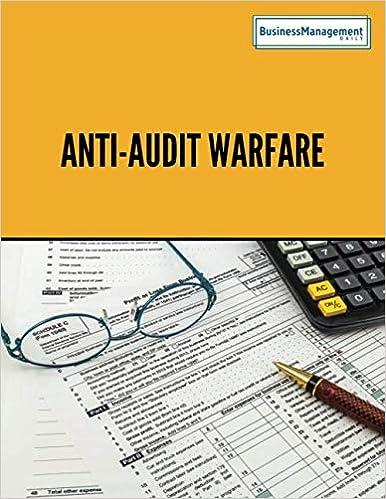Question
In the spring of 2018 Bob Fraser could not get his lawn mower to start. Being mechanically inclined he took it apart, cleaned some things,
In the spring of 2018 Bob Fraser could not get his lawn mower to start. Being mechanically inclined he took it apart, cleaned some things, put in a few new parts and got it to work. His neighbor was having the same problem and offered to pay to get his machine running as well. That was the geneses of his small engine repair business that he eventually decided to refer to as Economy Small Engine Repair (ESER). Bob took the required technical courses over the winter and spring of 2018/2019 on small engine repair and decided to work at this small business out of his garage to make some extra money. Towards the middle of 2020 he decided to do small engine repair permanently. Not knowing much about running a business full time, he is looking for some help. You are a business student living in the basement suite of Bobs house and you are currently in the Winter 2021 semester offering of BUS 285 Introduction to Financial Accounting. You have offered to help Bob as much as you can in exchange for a small fee. In BUS 285, you learned about the accounting information system and need to analyze the transactions which Economy Small Engine Repair entered into to determine if they affect the accounting equation. After doing so, you know that it is necessary to journalize the transactions that affect the accounting equation and prepare a trial balance. The following are the transactions Economy Small Engine Repair (ESER) entered into from August 1 to September 30, 2020: On August 1, Bob invested $10,000 of his savings in ESER in return for common shares. (you have advised Bob to incorporate) Bobs sister was interested in helping get him started so on August 9, she invested $5,000 in Economy Small Engine Repair in return for common shares. Also on August 9, Bob purchased and paid $2,500 for the computer equipment necessary to run ESER. The supplier of the computer equipment advised you can expect to use it for 5 years before it will require replacement. On August 20, you purchased repair equipment including work benches, shelving, various specialty tools and an engine analyzer. The total cost of the equipment from one supplier (not including an analyzer) was $4,750 and payment was due September 30. It will last 5 years. The analyzer costs $350 from a different supplier due September 30 as well. It will last three years. On August 28, you purchased the inventory (parts, oils and cleaners, etc.) necessary to make engine repairs. As ESER is a new business, none of the parts supply businesses would extend credit. Therefore, you had to pay the $2,750 at the time you picked up the inventory items. On September 5 Bob consulted with a parts supplier to see if he could get a small discount on purchases and not have to pay cash. On September 10, Bob borrowed $5,000 from the Royal Bank. The loan is to be repaid on October 1, 2022. On September 18, you paid $475 to have posters printed advertising ESERs services. On September 27, you paid the amount due for the purchase of the repair equipment from August 20. On September 30, Bob paid himself $1,000. Total cash sales for September 1 to September 30 were $3,300. Economy Small Engine Repair also provided repairs to a couple of commercial accounts that he had managed to obtain. These sales totaled $1,900 and although they have been billed, payment was not received until October. On September 30, you received a cheque for $750. The cheque was a payment for repairs of a commercial client. A note attached to the cheque stated that the business thought it would make payment earlier than the October 2020 due date as the owner remembers how difficult the first few months of running a new business can be. Tasks 1. You are a bit behind, but you decided to journalize the transactions described above (in good form) all at the same time. You remember your instructor telling you that means the journal entries must be dated, properly formatted and must include a brief explanation for each transaction. If a transaction did not affect the accounting equation and should not be journalized as a result, you decided to note that no journal entry was necessary as a reminder to yourself. 2. After journalizing the transactions for August 1 to September 30, 2020, you then decided to post the transactions to T accounts. 3. Lastly, using the account balances determined in task 2, you sat down to prepare the September 30, 2020 trial balance
Step by Step Solution
There are 3 Steps involved in it
Step: 1

Get Instant Access to Expert-Tailored Solutions
See step-by-step solutions with expert insights and AI powered tools for academic success
Step: 2

Step: 3

Ace Your Homework with AI
Get the answers you need in no time with our AI-driven, step-by-step assistance
Get Started


